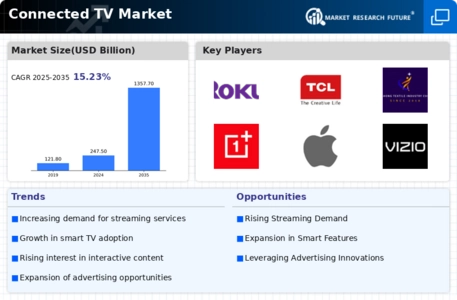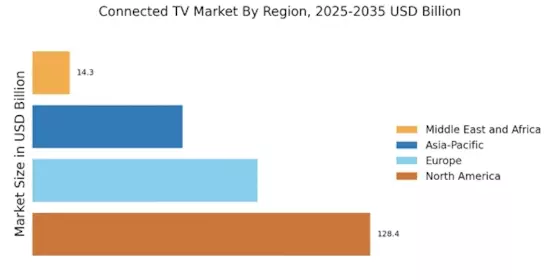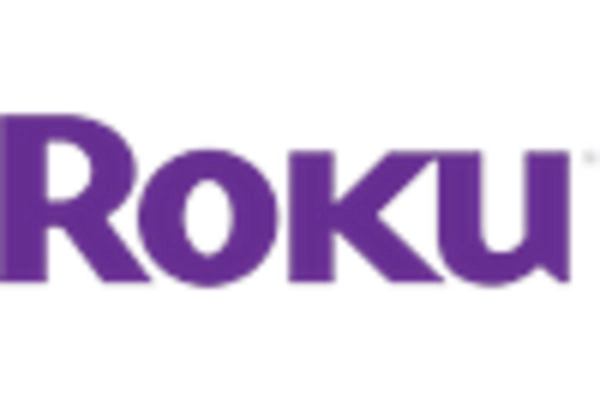Shift Towards On-Demand Content
The shift towards on-demand content consumption is reshaping the Connected TV Market. With consumers increasingly favoring platforms that offer flexibility in viewing schedules, traditional broadcasting is facing challenges. Data suggests that over 70% of viewers prefer streaming services that allow them to watch content at their convenience. This trend is driving the demand for connected televisions that support various streaming applications and services. As a result, the Connected TV Market is likely to expand, as manufacturers focus on developing devices that cater to the evolving preferences of consumers who prioritize on-demand content.
Increase in Internet Penetration
The Connected TV Market is experiencing a notable surge due to the increase in internet penetration across various regions. As more households gain access to high-speed internet, the demand for connected devices, including smart TVs, is likely to rise. Reports indicate that internet penetration rates have reached approximately 60% in many areas, facilitating seamless streaming and online content consumption. This trend suggests that consumers are increasingly inclined to adopt connected televisions, which offer a plethora of streaming options and applications. Consequently, the Connected TV Market is poised for growth as more users seek to enhance their viewing experiences through internet-enabled devices.
Adoption of Smart Home Technologies
The integration of smart home technologies is significantly influencing the Connected TV Market. As consumers increasingly invest in smart home ecosystems, the demand for connected televisions that can seamlessly integrate with other smart devices is likely to grow. This trend is evidenced by the rising sales of smart home devices, which have seen an annual growth rate of over 20%. Connected TVs that can control lighting, security systems, and other smart appliances are becoming more appealing to tech-savvy consumers. Thus, the Connected TV Market stands to benefit from this convergence of technologies, as it enhances the overall user experience and convenience.
Expansion of Advertising Opportunities
The expansion of advertising opportunities within the Connected TV Market is becoming increasingly evident. As advertisers recognize the potential of reaching targeted audiences through connected devices, investment in connected TV advertising is on the rise. Data indicates that connected TV ad spending is projected to exceed 20 billion dollars by 2026, reflecting a growing recognition of the effectiveness of this medium. This trend suggests that the Connected TV Market will not only benefit from increased device sales but also from the monetization of content through targeted advertising strategies. As a result, the industry is likely to experience robust growth driven by these evolving advertising dynamics.
Growing Popularity of Interactive Content
The growing popularity of interactive content is emerging as a key driver for the Connected TV Market. As audiences seek more engaging and immersive viewing experiences, platforms that offer interactive features are gaining traction. This trend is reflected in the increasing number of interactive shows and applications available on connected televisions. Reports indicate that interactive content can enhance viewer engagement by up to 50% compared to traditional formats. Consequently, the Connected TV Market is likely to see a rise in demand for devices that support these innovative features, as consumers gravitate towards more participatory forms of entertainment.


















Leave a Comment